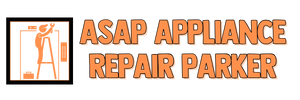In today’s kitchen, ice makers have become an essential fixture, affording us the convenience of ice whenever we require it. Nevertheless, when your ice maker starts misbehaving or stops functioning, it can be an understandably maddening situation. Before hastily settling on a new one, consider troubleshooting and resolving the issue. Within this exhaustive guide, we’ll address typical ice maker issues and present practical resolutions to get your ice cubes flowing once more.
Section 1: Safety Guidelines
Before you set off on your ice maker repair adventure, ensure safety is paramount by adhering to these guidelines:
Electrical Source Disconnection: Ensure your safety by double-checking that the ice maker is unplugged or disconnected from its power source to avoid electrical incidents.
Water Valve Deactivation: To prevent leaks during repairs, ensure the water valve is turned off if your ice maker is connected to a water supply.
Employ Safety Accessories: Whenever you’re working with tools or electrical parts, don safety gear like gloves and safety goggles.
Segment Two: Routine Ice Maker Predicaments and Resolutions
Zero Ice Output:
Solution: Investigate the water supply system closely. Make sure the water line is unobstructed and not twisted. If there’s a blocked water filter, make sure to replace it. If the water supply appears normal, conduct a detailed examination of the water inlet valve or the ice maker assembly for any issues.
Inadequate Ice Cube Size:
Solution: Low water pressure may be the cause of small or crooked ice cubes. Check the water inlet valve and water pressure. If required, make alterations or replacements.
Ice Maker’s Clamorous Noises:
Solution: Unusual noises might result from a faulty ice maker motor, fan, or evaporator. Inspect and, when necessary, replace these components.
Water Draining Out:
Solution: Leaks might be caused by a malfunctioning water inlet valve, a fractured ice mold, or a obstructed drain line. Determine the source and carry out the essential repairs.
Taste and Odor Problems in Ice:
Solution: The problem may be caused by pollutants or a dirty ice maker if you notice an unpleasant taste or odor in your ice. The water reservoir, lines, and ice maker should all be cleaned frequently. The water filter should also be replaced if necessary if it is outdated or obstructed.
Ice Maker’s Overflow Dilemma:
Solution: A broken ice machine thermostat or a broken water intake valve could both cause overflows. Replace these components if you want to solve this problem.
Segment 3: Determining When It’s Time to Contact a Professional
Despite the effectiveness of DIY remedies for several ice maker problems, specific situations insist on the expertise of a professional technician:
Electrical Issues: It is essential to seek professional advice if you are having electrical problems while performing repairs or if you are unfamiliar with electrical work.
Replacing Complex Components: It is typically best to call in a specialist when dealing with internal component problems, such as those involving the ice maker control module or the ice mold thermostat.
Refrigerant Leakage (in certain ice maker models): Ice makers in particular models are connected to refrigeration systems. If you suspect a refrigerant leak, it’s vital to contact a professional promptly.
A cost-effective way to get the convenience of always having ice on hand back is to fix your ice maker. You can often diagnose and fix problems on your own if you put safety first and gather knowledge about typical difficulties and how to solve them. Nevertheless, when faced with more challenging problems or if you lack confidence in the repair process, seek the expertise of a professional technician without hesitation. Maintaining a well-maintained ice maker ensures you can indulge in cold beverages and frozen delights at your convenience.

